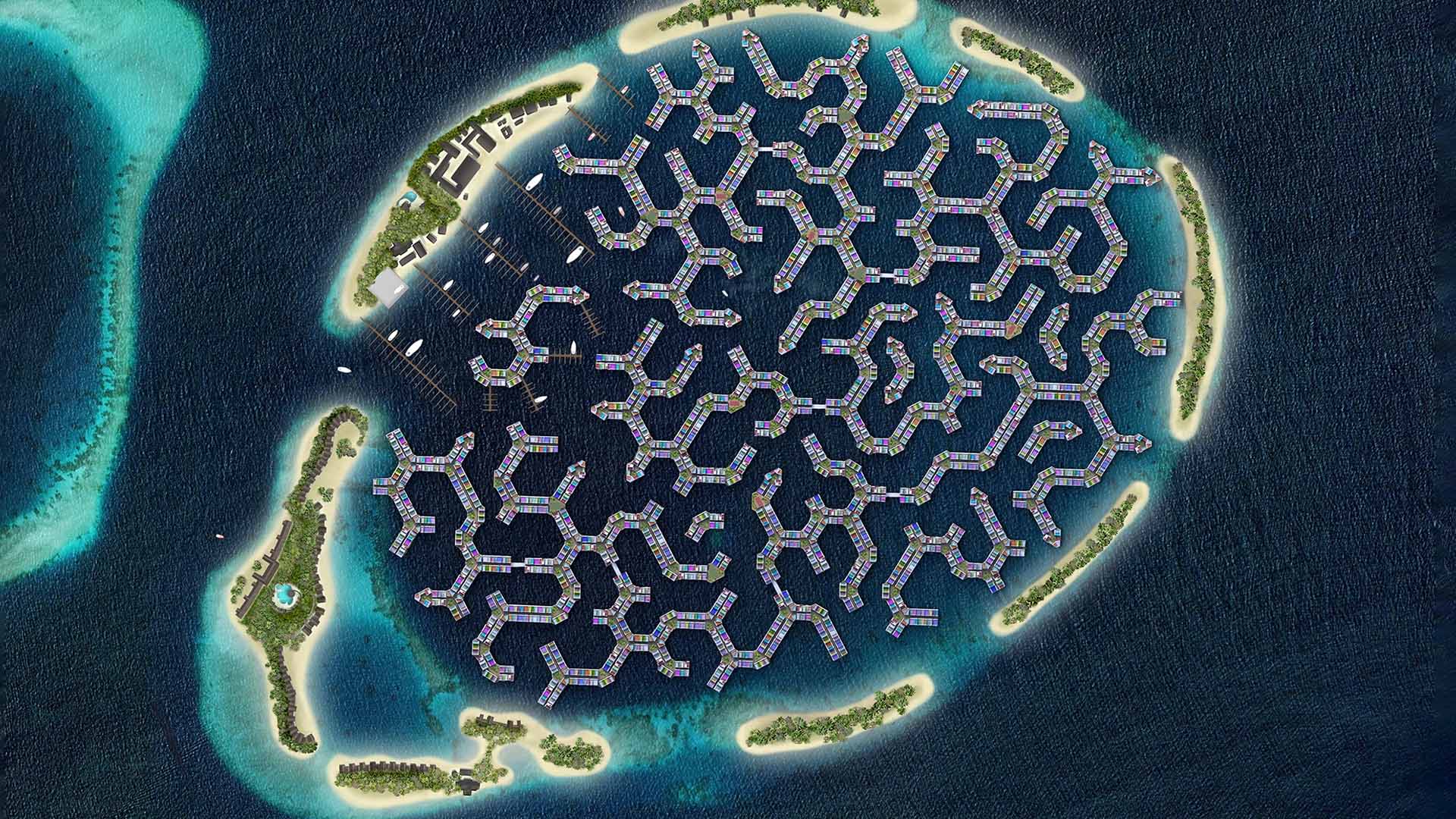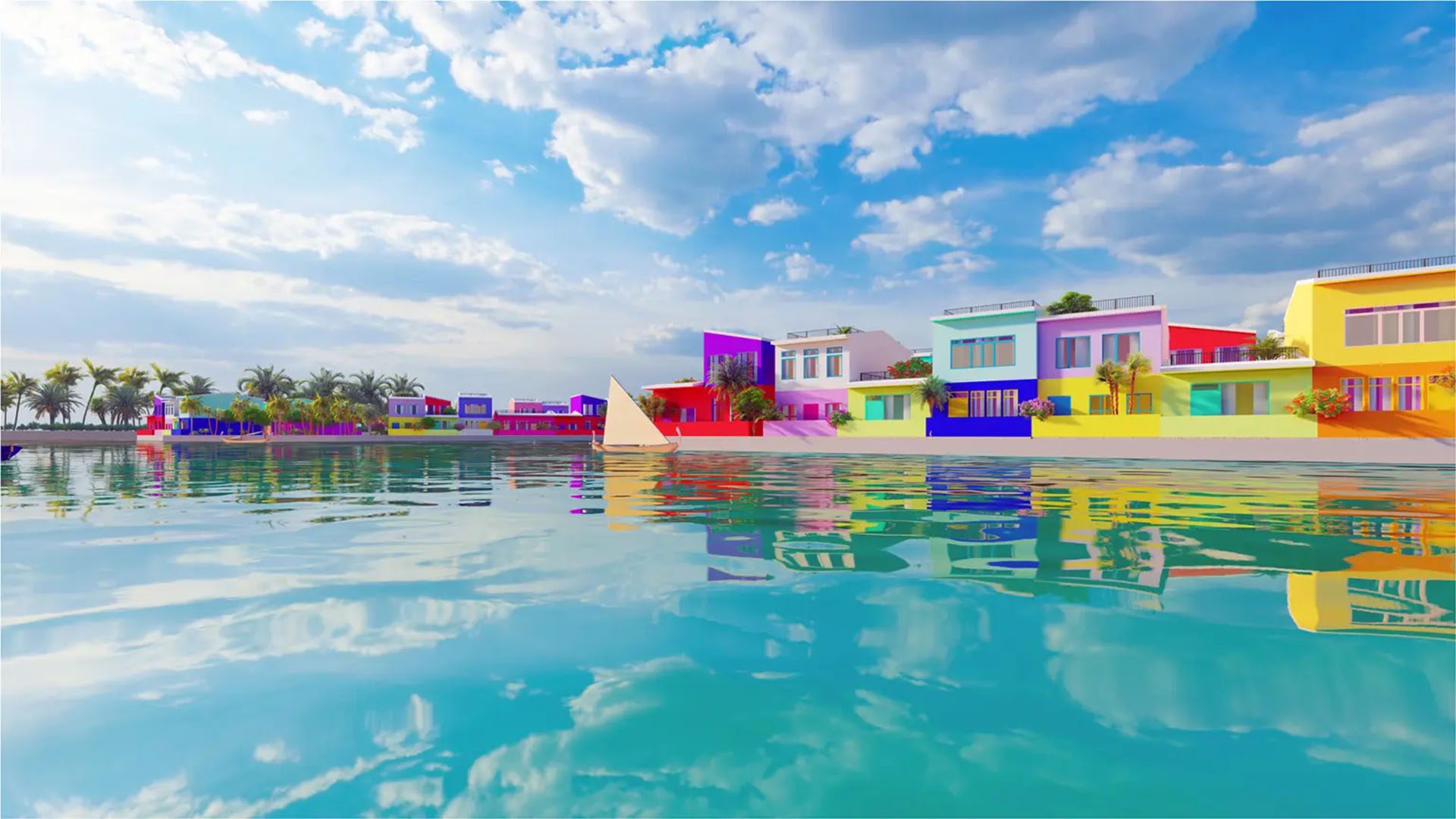To combat rising sea levels and overpopulation, the Government of the Maldives, property developer Dutch Docklands, and the Waterstudio architecture firm have announced the construction of a floating city in the Maldives. The new island is a ten-minute boat ride from Male, the capital of the Maldives.

The Floating City
When completed, its 5,000 floating units will contain houses, restaurants, shops, schools, a hospital, and 20,000 people. Residents will be able to use boats on the canals that run between the units but can walk, cycle, or drive electric scooters within a unit.
The potential environmental impact of the structure was assessed by local coral experts and approved by the government. Artificial coral banks made from glass foam will also be connected to the bottom of the city to support marine life and stimulate coral growth.
To ensure the city’s sustainability, solar energy will power most of the city, and the buildings’ temperatures will be regulated via deep water sea cooling. Deep water sea cooling involves pumping cold water from the deep sea into the lagoon and helps save energy. Additionally, the city’s sewage will be treated locally and used as plant fertilizer.

The modular units will be constructed in a local shipyard; once done, they will be towed to the floating city and attached to a large underwater concrete hull. The concrete hull is screwed to the seabed on telescopic steel slits so it can gently fluctuate with the waves. The surrounding coral reef provides a natural wave breaker that will stabilize the city and prevent seasickness.
If all goes to plan, residents will begin moving in early 2024 with the whole city set to be completed by 2027.
Maldives & Climate Change
One of the motivations behind the floating city is to combat Male’s overpopulation. Male is one of the most densely populated cities in the world, with more than 200,000 people in an area of about eight square kilometers (~3.2 square miles). For reference, that’s smaller than both London Heathrow Airport (4.687 square miles) and Los Angeles International Airport (5.4 square miles).
However, the main driving force behind the city’s construction is rising sea levels. The Maldives, an archipelago of 1,190 islands, is one of the world’s most vulnerable nations to climate change. Eighty percent of its land area is less than one meter above sea level; due to rising sea levels, researchers estimate that most of the islands will be underwater by the end of the century.
A floating city, on the other hand, would be sea-level rise-proof. While the city alone could only house about a twenty-fifth of the Maldives’ population, its success would represent what the entire country could be in the future.
Floating Architecture
The floating city off of Male is not the first floating architecture project or even the first floating city. In April 2022, the United Nations announced the construction of a floating city off of Busan, South Korea’s second-largest city, called OCEANIX Busan. It plans to provide homes for 12,000 people with the potential to rise to 100,000. Similar to the city off of Male, OCEANIX Busan is being created as a response to land shortages and climatic threats.
In terms of floating infrastructure, Waterstudio, the architecture studio from the Netherlands that designed the Maldives’ floating city, has designed over 300 floating homes, offices, schools, and health care centers around the world. The Netherlands itself has become a center for floating architecture, home to a floating park, dairy farm, and office building.
As Koen Olthius, Waterstudio’s founder, told the New York Post, “Floating developments will push real estate beyond the waterfront which will change our cities similar to the introduction of high-rise buildings a century ago.” With one report from the World Resources Institute predicting that by 2030, urban property worth more than $700 billion will be impacted annually by coastal and riverine flooding, a shift towards floating infrastructure and cities may be necessary.







